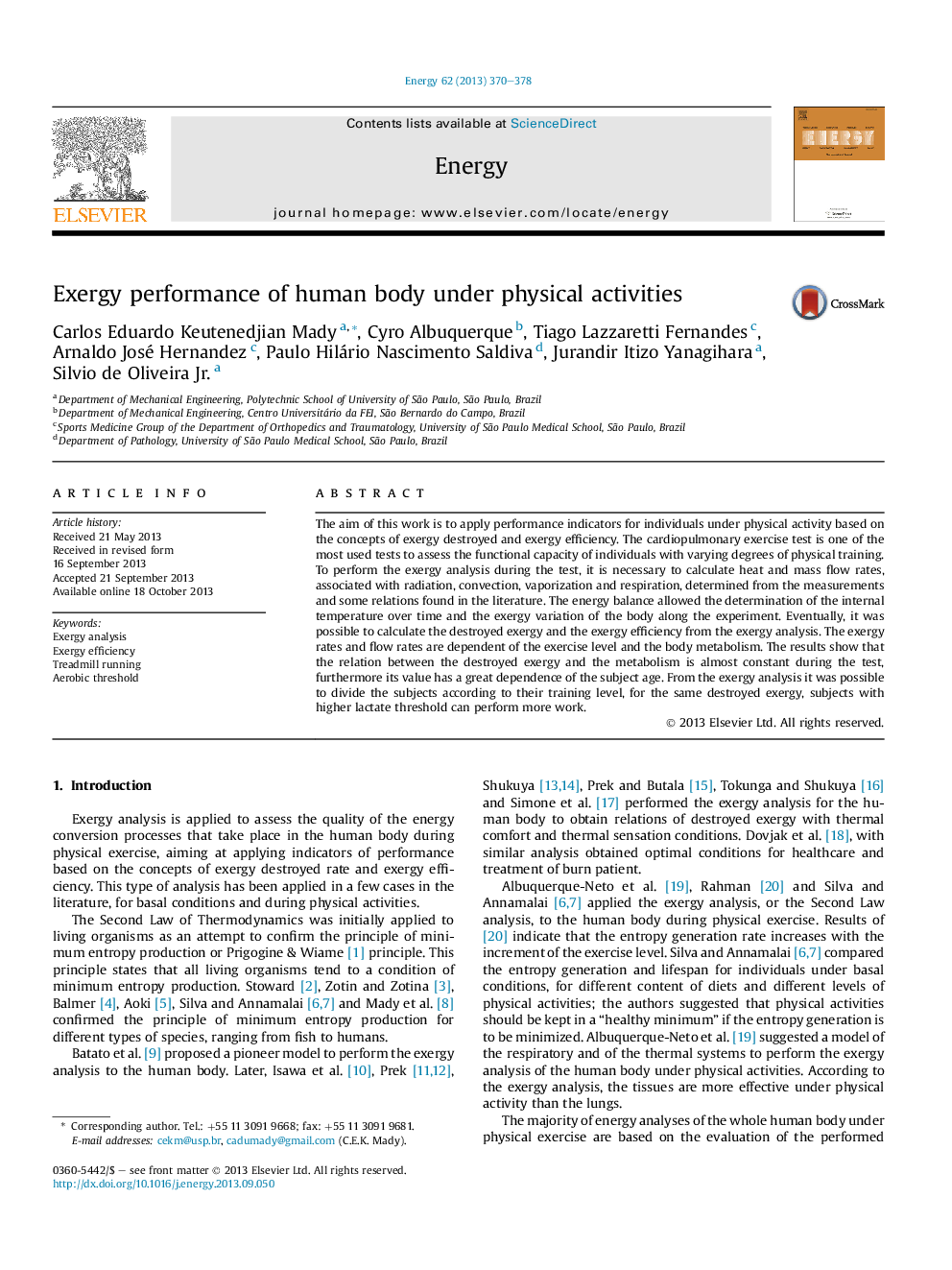| کد مقاله | کد نشریه | سال انتشار | مقاله انگلیسی | نسخه تمام متن |
|---|---|---|---|---|
| 1732767 | 1521484 | 2013 | 9 صفحه PDF | دانلود رایگان |

• Exergy analysis was applied to the human body under physical activities.
• Concept of maximum available work from ATP hydrolysis was compared with exergy analysis results.
• For the same destroyed exergy, subjects with higher lactate threshold can perform more work.
• Runners during physical activities tend to a state of minimum destroyed exergy and maximum exergy efficiency.
The aim of this work is to apply performance indicators for individuals under physical activity based on the concepts of exergy destroyed and exergy efficiency. The cardiopulmonary exercise test is one of the most used tests to assess the functional capacity of individuals with varying degrees of physical training. To perform the exergy analysis during the test, it is necessary to calculate heat and mass flow rates, associated with radiation, convection, vaporization and respiration, determined from the measurements and some relations found in the literature. The energy balance allowed the determination of the internal temperature over time and the exergy variation of the body along the experiment. Eventually, it was possible to calculate the destroyed exergy and the exergy efficiency from the exergy analysis. The exergy rates and flow rates are dependent of the exercise level and the body metabolism. The results show that the relation between the destroyed exergy and the metabolism is almost constant during the test, furthermore its value has a great dependence of the subject age. From the exergy analysis it was possible to divide the subjects according to their training level, for the same destroyed exergy, subjects with higher lactate threshold can perform more work.
Journal: Energy - Volume 62, 1 December 2013, Pages 370–378